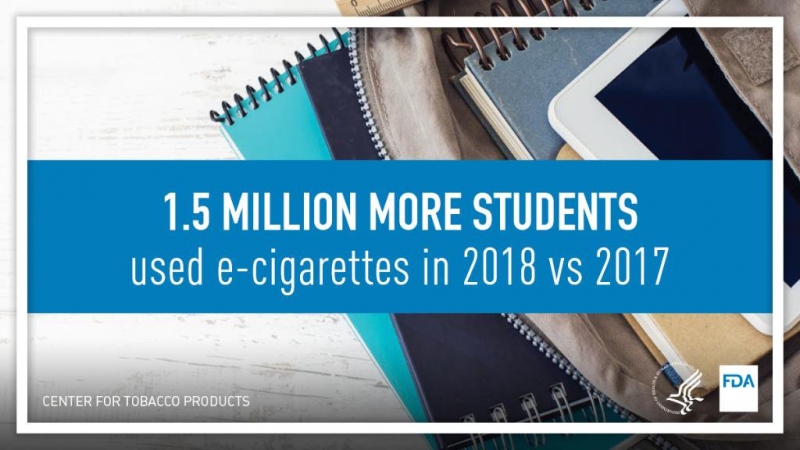Sharp Increase in E-Cigarette Use among Youth over Past Year

Although there has been significant progress in reducing the number of youth who smoke cigarettes, recent advancements in tobacco and nicotine products have opened up a variety of ways to consume nicotine. Electronic cigarettes, or e-cigarettes, are one the newest additions to the marketplace and have become the most commonly used nicotine product among youth in the U.S. Learn what you can do to address e-cigarette use.
In 2018, more than 3.6 million middle and high school students reported that they were currently using e-cigarettes (also referred to as ‘vaping’).[1] According to data from the Centers for Disease Control and Prevention and the Food and Drug Administration’s National Youth Tobacco Survey, the percentage of high-school-age children reporting past 30-day use of e-cigarettes increased by more than 75 percent between 2017 and 2018, while use among middle-school-aged children increased nearly 50 percent.
E-cigarettes are battery-powered devices that heat an “e-liquid” to create an aerosol the user then inhales. Most e-liquids contain nicotine and many are flavored, making e-cigarettes particularly attractive to youth. E-cigarettes can come in many different shapes and sizes, but some of the most popular products — like JUUL — look like USB flash drives and emit very little aerosol during use making them easier for students to conceal and use while in school and at home. The popularity of these products among youth is especially concerning because, as the recent Surgeon General’s Advisory on E-cigarette Use among Youth stated, “A typical JUUL cartridge, or ‘pod,’ contains about as much nicotine as a pack of 20 regular cigarettes.”
Although certain e-cigarettes may offer potential harm reduction opportunities to addicted adult smokers who want to transition off of combustible cigarettes, e-cigarettes are not safe for youth to use. This is because nicotine can harm the developing brain — which continues to develop until about the age of 25. Research has found that a significant portion of youth do not see a “great risk of harm” in vaping nicotine,[2] which is another cause for concern regarding e-cigarette use among youth.
[1] Cullen, K. A., Ambrose, B. K., Gentzke, A. S., Apelberg, B. J., Jamal, A., & King, B. A. (2018). Notes from the Field: Use of Electronic Cigarettes and Any Tobacco Product Among Middle and High School Students — United States, 2011–2018. MMWR Morb Mortal Wkly Rep, 67:1276–1277. (Original Data Source: NYTS 2018).
[2] Johnston, L. D., Miech, R. A., O’Malley, P. M., Bachman, J. G., Schulenberg, J. E., & Patrick, M. E. (2019). Monitoring the Future national survey results on drug use: 1975-2018: Overview, key findings on adolescent drug use. Ann Arbor: Institute for Social Research, The University of Michigan.
